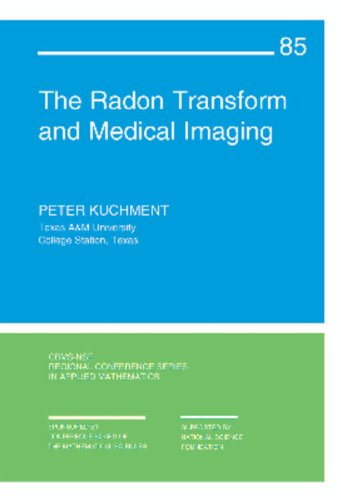

Most ebook files are in PDF format, so you can easily read them using various software such as Foxit Reader or directly on the Google Chrome browser.
Some ebook files are released by publishers in other formats such as .awz, .mobi, .epub, .fb2, etc. You may need to install specific software to read these formats on mobile/PC, such as Calibre.
Please read the tutorial at this link: https://ebookbell.com/faq
We offer FREE conversion to the popular formats you request; however, this may take some time. Therefore, right after payment, please email us, and we will try to provide the service as quickly as possible.
For some exceptional file formats or broken links (if any), please refrain from opening any disputes. Instead, email us first, and we will try to assist within a maximum of 6 hours.
EbookBell Team

4.0
76 reviewsThe Radon Transform and Medical Imaging emphasizes mathematical techniques and ideas arising across the spectrum of medical imaging modalities and explains important concepts concerning inversion, stability, incomplete data effects, the role of interior information, and other issues critical to all medical imaging methods.
For nonexperts, the author provides appendices that cover background information on notation, Fourier analysis, geometric rays, and linear operators. The vast bibliography, with over 825 entries, directs readers to a wide array of additional information sources on medical imaging for further study.
Audience: Graduate students and researchers in mathematics, physics, and engineering who are interested in the mathematics behind medical imaging will find this book useful.
Contents: Part I: Introduction; Chapter 1: Why Use Mathematics in Medical Imaging?; Chapter 2: A Brief and Incomplete History of CT; Chapter 3: Some Major CT Modalities and Their Features to Watch for; Chapter 4: Organization of the Book; Part II: Traditional Computed Tomography Techniques and Integral Geometry; Chapter 5: Standard CT and X-ray and Radon Transforms; Chapter 6: Emission Tomography; Chapter 7: Artifacts, Incomplete Data, Miocrolocal Analysis, and Such; Chapter 8: More About 3D Radon and X-ray Transforms; Chapter 9: A Brief Overview of Numerical Methods; Chapter 10: MRI, EIT, OT, Elastography, UT; Part III: Hybrid (Coupled Physics) Imaging Techniques; Chapter 11: Thermo-, Photo-, and Optoacoustic Tomography (TAT/PAT/OAT); Chapter 12: Ultrasound Modulation in EIT and OT; Chapter 13: Inverse Problems with Interior Information; Part IV: Appendices; Appendix A: Notation; Appendix B: Brief Notes on the Fourier Transform and Harmonic Analysis; Appendix C: Geometric Rays, Trapping, Energy Decay; Appendix D: Some Classes of Linear Operators and Operator Functions